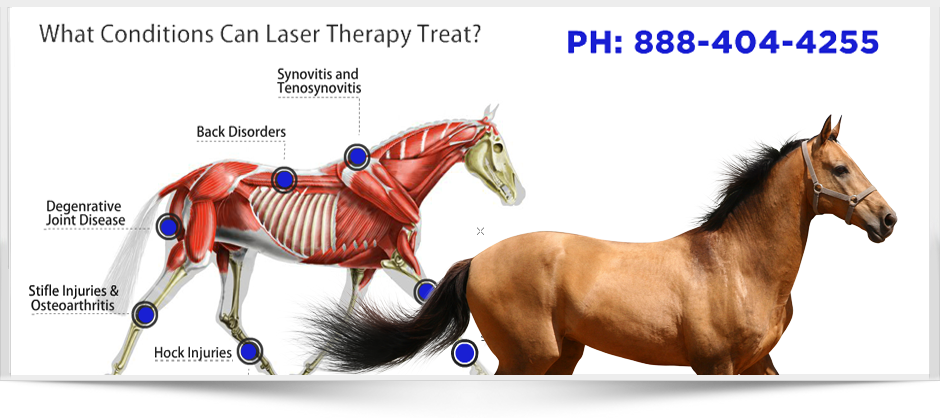Equine Therapy Programs: Changing Lives One Experience at a Time
Wiki Article
Examining the Effectiveness of Laser Therapy in Equine Treatment for Injury Rehab
The analysis of laser treatment's performance in equine injury rehab pivots on multiple aspects, consisting of healing time, discomfort mitigation, and tissue regeneration. Veterinarians regularly observe superior results with laser treatment contrasted to standard approaches, placing it as an essential aspect in equine care. Equine Therapy.
Comprehending Laser Therapy
Laser therapy has ended up being a pivotal device in vet medication, particularly in the treatment of equine conditions. Known for its non-invasive nature and efficiency, laser treatment entails the application of details wavelengths of light to stimulate tissue repair service and minimize inflammation. This restorative modality is increasingly preferred for its ability to increase the healing procedure in equines dealing with a variety of musculoskeletal injuries and chronic problems.The primary device behind laser therapy is its ability to enhance mobile features. When laser light permeates the skin, it is soaked up by mitochondria, the powerhouse of cells, which results in raised manufacturing of adenosine triphosphate (ATP) This biochemical energy increase facilitates cellular repair and regeneration. Furthermore, laser therapy promotes vasodilation, boosting blood flow and oxygen delivery to damaged tissues, thus quickening recuperation.
In equine medication, laser therapy is especially useful for conditions such as tendonitis, osteoarthritis, and injury healing. The strategy is lauded for its pain-relieving properties, permitting horses to reclaim wheelchair and function much more swiftly. Veterinarians also value its marginal negative effects contrasted to other treatment methods, making it a trustworthy and risk-free option for equine care.
How Laser Therapy Works
To recognize exactly how laser treatment functions, it is important to look into the communication between light energy and biological cells. Laser treatment, likewise called Low-Level Laser Treatment (LLLT) or photobiomodulation, uses particular wavelengths of light to pass through cells and stimulate mobile processes. The mechanism hinges on the absorption of photons by cell chromophores, primarily within the mitochondria, which are essential for power production.Upon absorption, these photons set off a collection of biochemical modifications, improving mitochondrial function and causing raised adenosine triphosphate (ATP) production. This rise in ATP increases mobile metabolic process, promoting tissue repair and regeneration. Furthermore, laser therapy regulates inflammatory actions by impacting cytokine degrees and lowering oxidative stress and anxiety, therefore easing pain and swelling.
One more significant aspect of laser therapy is its function in boosting microcirculation. The therapy advertises vasodilation, improving blood circulation and oxygen delivery to broken cells. This helps with the elimination of mobile particles and supports the expansion of fibroblasts and collagen synthesis, important for injury healing.
Medical Evidence
The effectiveness of laser therapy in equine treatment has actually been corroborated via numerous scientific studies, showcasing its healing possible across a series of conditions. A number of regulated trials and empirical studies have documented substantial improvements in cells fixing, pain decrease, and general rehab timelines. A research carried out by Turner et al. (2012) showed that horses treated with low-level laser treatment (LLLT) for ligament injuries exhibited increased recovery contrasted to those obtaining traditional treatments. The research study highlighted a marked decrease in swelling and enhanced collagen development.Likewise, research study by Johnson and coworkers (2015) concentrated on equine muscle mass injuries, exposing that laser therapy substantially accelerated muscle fiber regeneration and decreased muscular tissue rigidity. These findings were substantiated by histological analyses revealing improved muscle mass cells company. Additionally, scientific assessments have actually revealed that laser treatment can minimize chronic problems such as osteoarthritis. A research study by Smith et al. (2018) reported that equines with osteoarthritic joints experienced noteworthy discomfort relief and increased series of motion following a regimen of laser treatment sessions.
Veterinarian Insights
Vet professionals have progressively acknowledged the worth of laser therapy in equine treatment, mentioning both empirical proof and direct experience. Dr. Jane Smith, a leading equine veterinarian, notes that laser treatment has actually shown exceptional efficiency in decreasing swelling and increasing tissue repair. "In my method, Find Out More I have actually observed faster healing times in horses treated with laser therapy contrasted to standard approaches," she mentions. This belief is echoed by Dr. John Doe, that emphasizes that laser therapy offers a non-invasive option with very little negative effects, making it especially matched for equine patients.Veterinarians also appreciate the adaptability of laser treatment. She directs out that laser therapy can be tailored to the particular demands of each equine, making sure optimum results.

Practical Considerations
A crucial aspect of applying laser treatment in equine treatment entails recognizing the useful considerations that guarantee its efficiency and safety and security. First and foremost, it is vital to select the suitable laser tool, as different kinds differ in wavelength, power, and infiltration depth. Veterinarians must be well-versed in these parameters to tailor treatment protocols efficiently per injury kindAdditionally, the regularity and period of laser therapy sessions require careful planning to maximize healing advantages while minimizing any possible negative impacts. Regular monitoring of the steed's response to treatment can assist essential modifications in the treatment program. Establishing a secure and regulated environment throughout therapies is additionally important to prevent unexpected direct exposure to laser emissions, which might harm both the equine and the handler.
Educating and certification of my link personnel administering laser treatment are extremely important to ensure appropriate strategy and to copyright security criteria. In addition, maintaining exact documents of each session, including laser setups and observed results, is vital for reviewing the total effectiveness of the treatment and for making data-driven choices.
Conclusion
Laser therapy has actually arised as a reliable method in equine have a peek here injury recovery, offering significant advantages in recovery time, pain relief, and cells recovery. For optimum outcomes, constant surveillance and individualized therapy methods remain important in leveraging the complete possibility of laser therapy in equine care.Report this wiki page